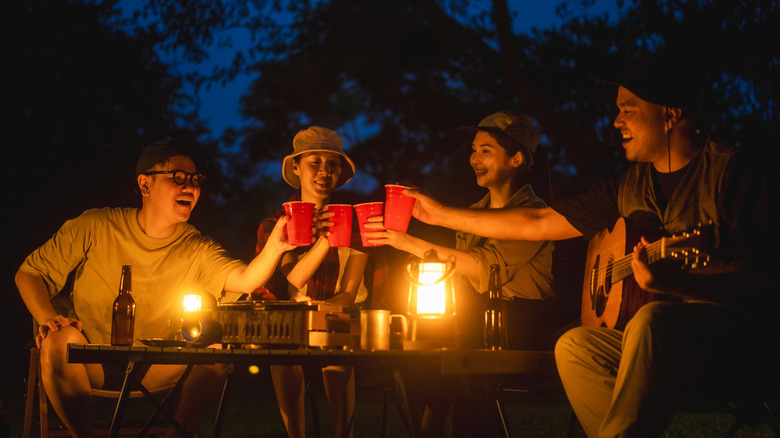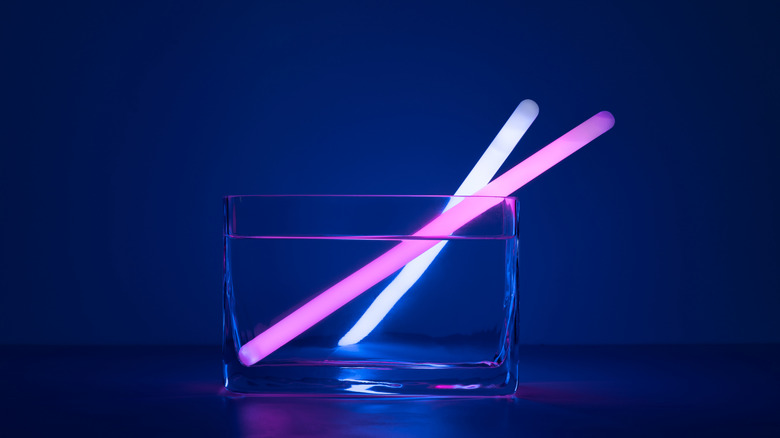This Cooler Hack Is A Cheap Camping Upgrade To Easily See What's Inside At Night
If you haven't been camping for a while — or much at all — it's easy to forget how dark it gets out there. Woods, desert, frozen tundra, the setting doesn't matter; the farther you stray from civilization, the thicker the night. This isn't exactly convenient for campers who like to stay up, chatting around the fire and knocking back a beverage or three. Sure, you can keep the cooler close at hand, and yes, you probably have a flashlight or headlamp to guide you through the blackness. For example, this affordable camping essential from Costco doubles as a power supply and charger. Yet some folks forget where they put their light sources, especially after a few beers, and batteries do die eventually. How, then, do you know what drink you're grabbing from invisible layers of ice?
How about glow sticks? If you're over the age of 10, you tend to forget that these colorful wands exist. They aren't very useful in everyday life, since they cast very little light. You can't switch a glow stick off, and once that light fades, you can never rekindle it. That's fine for kids strolling through a Christmas village or crowds at a music festival, but most people wouldn't think to bring floppy plastic tubes to the great outdoors.
For a cooler at night, though, a glow stick is a perfect solution. Their faint illumination is just enough to see labels on cans and bottles; when you flip the cooler's lid open, you won't flood the grounds with brightness and ruin the nocturnal atmosphere. It's just one of the hacks you can use to add some light to your campsite.
The pros and cons of glow sticks
Glow sticks may be the cheapest thing you buy before you trip: You can easily score 100 or so for less than $10, depending on their size and shape. They weigh almost nothing, so you can carry a good number in your car or on your person. You could even store them in the cooler itself, so you don't have to track them down later. Glow sticks are easy to use; just bend and crack them, and you're good to go.
One downside to glow sticks is the temperature of the cooler: Chemiluminescence responds best to high temperatures, so you'll get the brightest glow sticks on a warm night. Packed with ice, the light of the sticks will be softer, making it harder to identify what kind of IPA you've snatched from the pile. The good news is that cold environments slow down the process, so your glow sticks will shed light on the situation for a longer period.
Another concern is that glow sticks are terrible for the environment. The tubes are made of plastic, which isn't biodegradable, and the chemicals inside — though not life-threatening to humans — can contaminate the soil. There is no way to recycle a glow stick, and attempting to do so could be hazardous. And they shouldn't just get sent straight to the landfill; they should be sealed in another layer of plastic first (e.g., a plastic bag) to prevent them from leaking. This may not exactly jive with folks trying to enjoy nature, but there definitely are worse camper habits. However you decide to have fun in the woods, remember to do these things before leaving your campsite.

